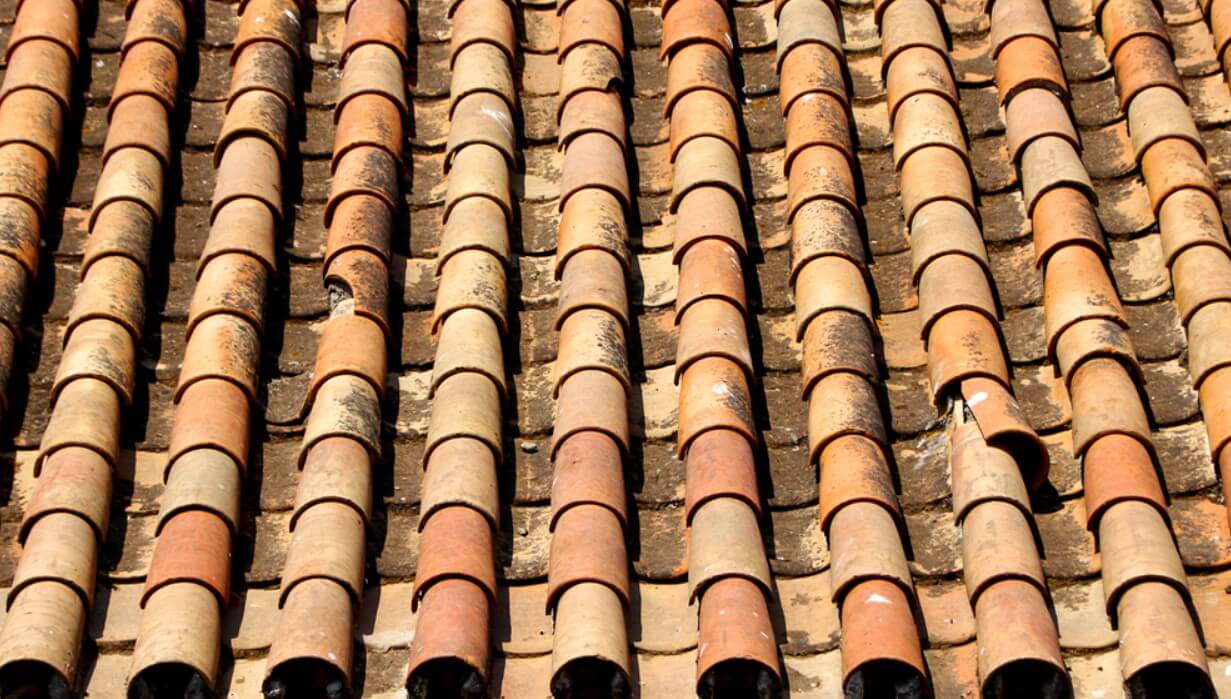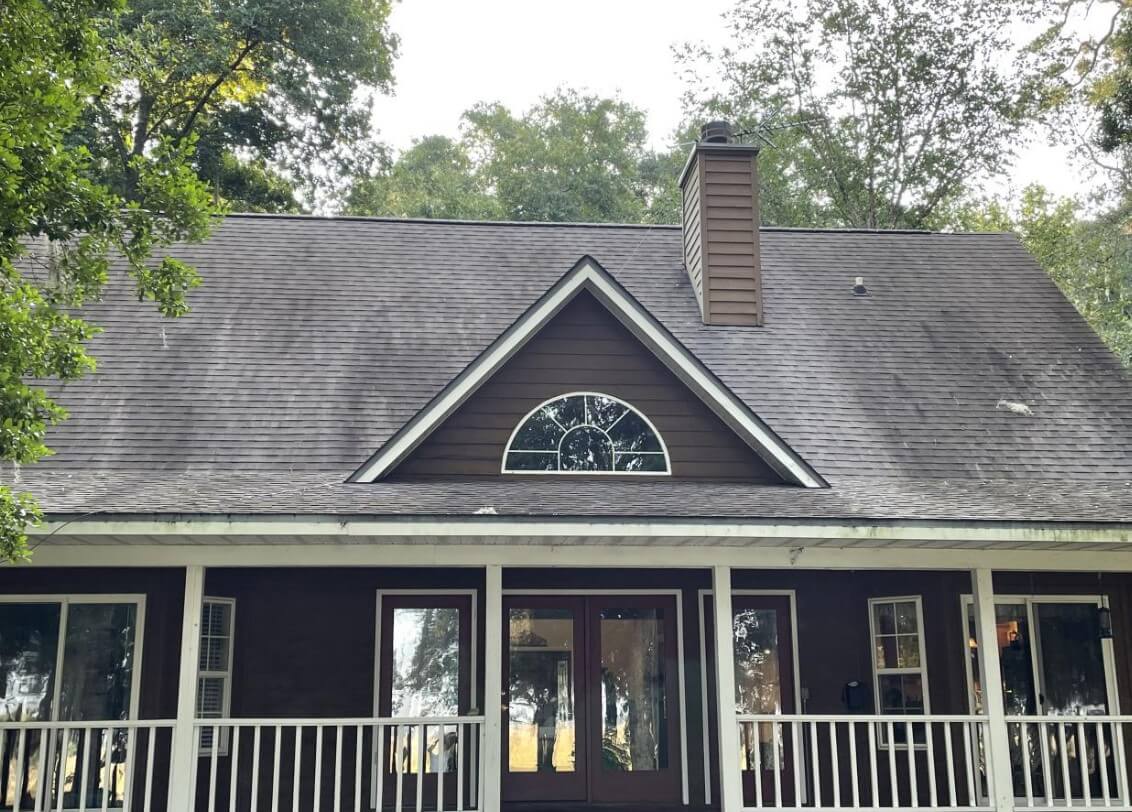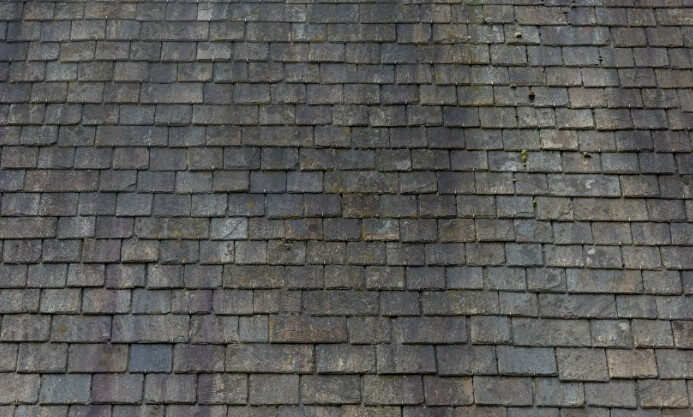Roof Discoloration: Causes and Solutions
May 27, 2024Welcome to the Roofing.Co blog, your trusted source for all things related to roofing. Today, we dive into a common concern among homeowners: roof discoloration. Over time, even the most well-maintained roofs can develop unsightly stains or color changes. But what exactly causes roof discoloration? In this comprehensive guide, we will explore the various factors that contribute to this phenomenon and provide practical solutions to maintain the aesthetic and structural integrity of your roof.

REQUEST A FREE QUOTE
In a hurry? Call us at 727-309-3344
1. Algae Growth
One of the most common causes of roof discoloration is the growth of algae, specifically a type known as Gloeocapsa magma. This blue-green algae thrives in humid environments and can spread rapidly across roof surfaces, leaving dark streaks or patches.
How it Happens:
Gloeocapsa magma spores are airborne and can land on any roof. They feed on the limestone filler in asphalt shingles, which provides the nutrients they need to grow. Over time, the algae build-up, creating noticeable dark streaks.
Prevention and Treatment:
Zinc or Copper Strips: Installing zinc or copper strips along the ridge of the roof can prevent algae growth. Rainwater that runs over these metals creates an environment that is inhospitable to algae.
Regular Cleaning: Regular roof cleaning using a solution of water and bleach (50:50 ratio) can help remove algae. However, it’s essential to use a low-pressure washer to avoid damaging the shingles.
Algae-Resistant Shingles: When replacing your roof, consider algae-resistant shingles that are coated with copper granules.
2. Moss and Lichen
Moss and lichen are other culprits that contribute to roof discoloration. They are more common in shaded areas of the roof where moisture accumulates and sunlight is limited.
How it Happens:
Moss and lichen spores are also carried by wind and can grow on any surface that retains moisture. They thrive in environments with minimal sunlight and can cause the roof to appear green, yellow, or white.
Prevention and Treatment:
Trimming Trees: Trim back overhanging branches to allow more sunlight to reach the roof and reduce moisture retention.
Regular Maintenance: Regularly inspect and clean the roof to remove moss and lichen. Use a soft brush or broom to gently remove these growths without damaging the shingles.
Chemical Treatments: There are commercial moss and lichen removal products available. These should be applied according to the manufacturer’s instructions for safe and effective treatment.
3. Environmental Pollutants
Airborne pollutants, such as dirt, dust, and industrial emissions, can settle on the roof, leading to discoloration. Urban areas with high pollution levels are particularly susceptible to this issue.
How it Happens:
Pollutants carried by wind and rain can accumulate on the roof surface. Over time, these pollutants can react with roofing materials, causing stains or color changes.
Prevention and Treatment:
Regular Cleaning: Periodic cleaning of the roof can help remove accumulated dirt and pollutants. A gentle pressure wash with water is often sufficient.
Sealants and Coatings: Applying a protective sealant or roof coating can create a barrier that minimizes the buildup of pollutants and makes cleaning easier.
4. Rust Stains
Rust stains are common on metal roofs or on roofs with metal components, such as flashings, vents, and gutters. These stains can appear as reddish-brown streaks or patches.
How it Happens:
Metal components on the roof can rust due to exposure to moisture and oxygen. The rust can then wash down onto the roof, leaving behind discoloration.
Prevention and Treatment:
Rust-Resistant Materials: Use rust-resistant materials for any metal components on the roof. Stainless steel or coated metals are good options.
Regular Inspection: Inspect metal components regularly for signs of rust and address any issues promptly.
Rust Removal Products: There are commercial rust removal products available that can be used to treat affected areas. Follow the instructions carefully to avoid damaging the roof.

REQUEST A FREE QUOTE
In a hurry? Call us at 727-309-3344
5. Tree Debris
Leaves, branches, and other debris from nearby trees can accumulate on the roof, leading to discoloration. When this organic material decomposes, it can create stains and promote the growth of algae, moss, and lichen.
How it Happens:
Tree debris retains moisture, creating an ideal environment for the growth of various organisms that cause discoloration.
Prevention and Treatment:
Regular Maintenance: Regularly remove tree debris from the roof, especially after storms or during the fall.
Gutter Cleaning: Keep gutters clean to prevent water backup and reduce the amount of debris that ends up on the roof.
Tree Trimming: Trim back trees to minimize the amount of debris that falls onto the roof.
6. Asphalt Shingle Aging
Asphalt shingles can discolor over time due to natural aging. This discoloration often appears as a gradual fading or as darker spots where granules have worn away.
How it Happens:
Exposure to UV rays, weather conditions, and the natural wear and tear of materials can cause asphalt shingles to age and discolor.
Prevention and Treatment:
Quality Shingles: Invest in high-quality shingles that have better resistance to UV rays and weathering.
Regular Inspections: Conduct regular roof inspections to identify and replace aging shingles before they become a significant issue.
Roof Coating: Applying a reflective roof coating can protect shingles from UV damage and prolong their lifespan.
7. Improper Installation
Improper installation of roofing materials can lead to uneven discoloration. This is often due to inconsistent application of materials or poor alignment of shingles.
How it Happens:
Incorrect installation techniques can create areas where water accumulates or where shingles wear unevenly, leading to discoloration.
Prevention and Treatment:
Hire Professionals: Always hire experienced and reputable roofing contractors to ensure proper installation.
Regular Inspections: Regular inspections can identify installation issues early, allowing for timely repairs.
8. Water Stains
Water stains can occur when there are leaks or poor drainage on the roof. These stains often appear as dark streaks or patches.
How it Happens:
Water can seep into the roofing materials through leaks or accumulate in areas with poor drainage, leading to discoloration and potential damage.
Prevention and Treatment:
Fix Leaks Promptly: Address any leaks immediately to prevent water damage and stains.
Ensure Proper Drainage: Make sure that the roof has proper drainage systems in place, such as well-maintained gutters and downspouts.
Inspect Flashing: Regularly inspect flashing around chimneys, vents, and other roof penetrations to ensure they are secure and watertight.
9. Biological Growth
Apart from algae, moss, and lichen, other biological growths like fungi and mold can also cause roof discoloration. These organisms thrive in damp environments and can create black or dark green patches.
How it Happens:
Moisture buildup due to poor ventilation or water leaks provides a breeding ground for fungi and mold.
Prevention and Treatment:
Improve Ventilation: Ensure that your attic and roof are well-ventilated to reduce moisture buildup.
Regular Cleaning: Regularly clean the roof to remove any biological growth.
Mold-Resistant Materials: Use mold-resistant roofing materials where possible.
10. UV Radiation
Prolonged exposure to UV radiation from the sun can cause roof materials to degrade and discolor. This is particularly noticeable in areas with intense sunlight.
How it Happens:
UV rays break down the chemical bonds in roofing materials, leading to fading, chalking, and loss of elasticity.
Prevention and Treatment:
Reflective Coatings: Applying reflective coatings can reduce UV damage and keep the roof cooler.
Quality Materials: Use high-quality roofing materials that are specifically designed to withstand UV exposure.
Regular Maintenance: Conduct regular maintenance to identify and repair UV damage early.

REQUEST A FREE QUOTE
In a hurry? Call us at 727-309-3344
Conclusion
Roof discoloration is a multifaceted issue with various underlying causes. From natural growths like algae, moss, and lichen to environmental pollutants and the effects of aging and UV radiation, understanding the root causes can help homeowners take proactive measures to protect their roofs. Regular maintenance, high-quality materials, and professional installation are key to preventing and addressing discoloration.
At Roofing.Co, we are committed to helping you maintain a beautiful and durable roof. If you’re experiencing roof discoloration or have any other roofing concerns, don’t hesitate to contact our expert team for advice and solutions tailored to your needs. Remember, a well-maintained roof not only enhances the curb appeal of your home but also ensures its structural integrity for years to come. Contact us today!
Services We Offer
Roofing co. can install any roof with great pride and care, no matter what style or type you prefer.
- Cost-Effective Roof Installation
- Roof Inspection
- HVAC Services
- Spray Foam Insulation
Roofing Co roofing system:
- Asphalt Shingle Roofs
- Metal Roofs
- Flat Roofs
At Roofing co. we understand that roofing services can be a significant investment, which is why we offer competitive pricing and financing options to help make our services more accessible to our customers. Contact us today!

